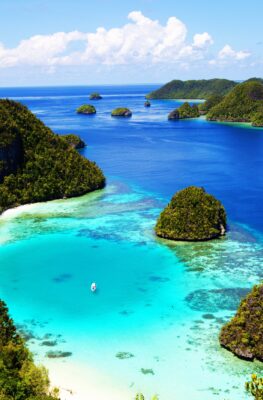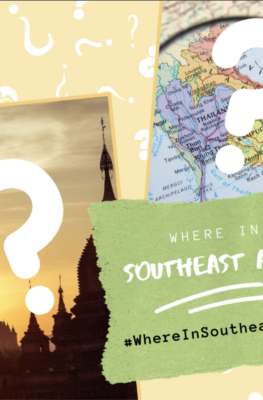Published on March 10, 2015
The Province of West Nusa Tenggara will this year present as highlight the “Tambora Greets The Word” event which will have its peak on 10th-11th April 2015. Building up to the pinnacle of the event, will be four groups of activities to attract around 2 million tourists to the island of Sumbawa, including 15,000 during the peak event.
“The road map of Tambora Greets the World will not only focus on Dompu as the site to Mount Tambora but will be spread over several places in the West Nusa Tenggara province” stated Moh.Faozal, head of the West Nusa Tenggara Province’s Office of Culture and Tourism.
The first group of activity covers social activities which include cataract and harelip operations, creative economy development, reforestation of Tambora’s surroundings, an exhibitionn of the province’s top products which include Tambora coffee, village markets, and a culinary fiesta centered at Dorocanga Village, starting point of the hiking track to Mount Tambora.
The second group of activity is based on art and culture. All of the art groups around Tambora will showcase their unique talents from modern and conventional country music to sea rituals to be held at Samota (Satonda, Moyo, Tambora) area which will be designated as a special economic region. There will also be a cultural parade which will take place on 1st April 2015.
The third group of activity covers seminars and knowledge development which include a Tourism Seminar on Tambora’s brand image (20th March 2015), an Archeology Seminar in Bima (9th April 2015), the Re-launching of La Hami literature along with the Archeology and Museum Exhibition(7th-9th April 2015), an Architectural Landscape Seminar on Vulcanology (9th to 12thAugust 2015) and a photography exhibition right after the peak event.
The fourth group of activity is centered on special interest sport adventures. This will include the Tambora Bike covering the route from Tambora to Dompu (8th-11th April 2015), Mount Tambora Ultra Run and Tambora Challenge (7th-11th April 2015), 10K Run in Dompu (5th April 2015), Nusantara Mountain Bike (10th April 2015), and a Special Horse Racingevent in Bima featuring child jockeys and the attraction of catching cows with lassos.
Other highlights of the event are: Trabas Tambora Motorcycle Touring by the Indonesian Motorcycle Association (4th-5th April 2015), Tambora Climbing Celebrities Expedition. (1st June 2015), Tambora Savana Run (31st May 2015), and Lakey Kite Surf Exhibition camp on Lakey Beach, Dompu (21st-23rd August 2015).
For the pinnacle of the event, the province of West Nusa Tenggara has anticipated a shortage of available accommodation. To add to the capacity, 150 floating hotelrooms will be prepared for the event along with tents from the police and the army. The Lumber Company Basecamp in Calabahi, at the foot of Mount Tambora is also made available.
To develop its tourism potentials, the province of West Nusa Tenggara will sign a promotional cooperation with PATA Indonesia which will be marked with the signing of an MoU on 11th March 2015 at the Sapta Pesona Building of the Tourism Ministry, Jakarta.
Situated near the northern edge of the island of Sumbawa in the West Nusa Tenggara Province, – located between the islands of Lombok and Flores, Mount Tambora is known to the world as the site of the largest and most deadly volcanic eruption in recorded history. Similar to the prehistoric Mount Toba in North Sumatra, Mount Tambora is also recognized as one of the world’s supervulcanoes. However, if the mega-eruption of Mount Toba – that occurred in the geological past- only left its traces in the massive Lake Toba, Mount Tambora, on the contrary, is still very active, standing today at a height of 2,751 meters.
If the mega-eruption of Mount Toba is believed to have plunged the earth into a 6-to-10-years of volcanic winter, and the explosion of Mount Krakatau in 1883 produced the loudest sound ever heard in the world in modern history, the super volcanic eruption of Mount Tambora also created a global episode when, following its eruption the previous year, the year 1816 was forever remembered as “The Year Without Summer”, resulting in the worst famine of the 19th century.
Its phenomenal eruption in April 1815 left an impressive 7 Km wide by 6.2 km gaping caldera containing a two-colored lake with depths reaching 800 meters. Itis also considered the largest caldera in Indonesia.
In 2004, archaeologist Haraldur Sigurdsson discovered the preserved bodies of two adults buried in nearly 10 feet of ash in the remnants of a small village on the volcano. The discovery is similar to the one made in the wake of the eruption of Mount Vesuvius in Italy in the year 79 that destroyed the city of Pompeii, prompting Mount Tambora’s nickname to become “the Pompeii of the East”.






